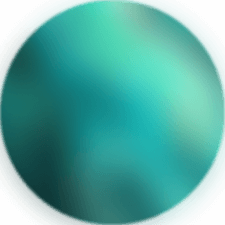Photosynthesis Begins
3.2 billion BCE • Primordial Sea
"Photosynthesis is the process by which plants, algae and some bacteria make their own food using only sunlight and compounds found in the surrounding air and water... All life forms are dependent on the nutrition derived from plants and algae in some way... All life is dependent on photosynthetic organisms for the continued release of free oxygen into the air... Bands of the oxidized mineral iron found in rocks that date back to 3 billion years ago serve as proof for scientists to know that oxygen was developing in the air from photosynthesis.
The first living cells probably existed alone for 2 billion years in an aquatic environment. Photosynthesis developed in these aquatic organisms during this time, first using the pigments chlorophyll a and phycobillins to produce their nutrients, and then developing accessory pigments such as chlorophyll b. Aquatic autotrophs continued to diversify and develop into algae and bacteria with better ways of using sunlight filtered through the water... The move of autotrophs to land, which occurred approximately about 425 million years ago, involved both benefits and risks. This move would not have been possible if not for the free oxygen products emitted from the original aquatic autotrophs, which produced a protective ozone layer (O3) to filter out the dangerous ultraviolet radiation. Plants evolved very specialized organs, such as leaves, to condense the chlorophylls and transport carbohydrates."
Source: "History of Photosynthesis" University of California, Berkeley: Museum of Paleontology. (UCMP)
Cyanobacteria: Mixture; native preparation; green filter. Doc. RNDr. Josef Reischig, CSc. via wikimedia commons CC BY SA 3.0


Learn about Maya Lin’s fifth and final memorial: a multi-platform science based artwork that presents an ecological history of our world - past, present, and future.

Discover ecological histories and stories of former abundance, loss, and recovery on the map of memory.

Learn how we can reduce our emissions and protect and restore species and habitats – around the world.

See how art can help us rethink the problems we face, and give us hope that each one of us can make a difference.

Help make a global memorial something personal and close to home. Share your stories of the natural world.

